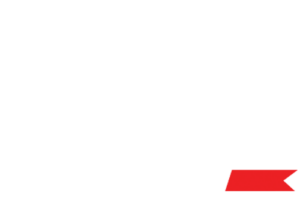The Construction industry saw the biggest drop in innovation from 2014 – 2018; the largest amongst all industries.
In fact, Construction Innovation has been in decline, according to data published from a survey conducted by the Department for Business, Energy & Industrial Strategy in 2020, showing that 44% of companies across the construction industry being classed as ‘innovation active’ in the years 2014 – 2016, but falling to 30% in 2016 – 2018.
And while that may be a huge cause for concern for the industry as a whole, the 44% who do continue to innovate, do so because they recognise opportunity in the markets they operate in, and those they intend to.
Unlocking new opportunities, whether that be in a new or existing market, is a by product of your company’s willingness to innovate and be part of change.
With the technological and digital landscape forever on the move, opportunities to expand and enter new markets are constantly developing.
So why expand your presence in an existing market?
- There is the opportunity to generate more sales and profits through the promotion of a new or existing product, perhaps to a different geographical location or a to be utilised in a different way, but in a market that already understands and subscribes to the value that your business and your product provides.
- You already have a good understanding of what the makeup of your target audience is, what challenges they face, and you have an existing solution that caters to their needs more effectively than those that are looking to enter a market for the first time. You have a head start; insider-knowledge, and you’re one step ahead of the game.
And what about new markets?
The risk you take in broadening your offering into a new market where you may not be as well-known, is offset by the chance at increased revenue opportunity, whether that be as a result of a competitor not taking full advantage of their position in the market, or whether that be a proof of concept for a solution that you believe will work well.
An opportunity to increasing brand awareness and reputation across multiple markets and expanding your scope,
Opportunities to evolving existing product solutions into new product development optionsto meet needs of the new market
Taking a detour to the electronics market for a second: One company that took product development and innovation to new heights, was Samsung.
Here’s a snapshot of how they expanced their reach within their existing market. 1938 – Samsung was founded in South Korea which, at the time, operated as a grocery trading store, before entering the electronics market 1969.
1972 – Focusing on Samsung’s TV portfolio, Samsung produced Black and White TVs for the domestic market
1982 – Samsung had already produced 10 million black and white TV’s.
1989 – With technology continuing to emerge throughout the 80’s, they had already produced over 20 million colours TV’s. Most recently Samsung unveiled the world’s first 75-inch MicroLed TV!

What does this tell us?
For the first 30 decades of Samsung’s history, they gradually diversified into a range of new markets, from grocery, textiles, insurance, securities and retail. After diversifying into the electronics sector, they we’re able to become a leader within this market.
Samsung stuck to what they knew best – electronics and over the years introduced successful innovation products.
One of these core products is the Samsung TV range – by sticking to what they do best, Samsung have achieved a global share within the TV product market, and since 2006 have dominate the global TV market.
Through Samsung’s innovation and willingness to adapt, they were able explore existing markets, while venturing into new markets successfully.
The result – a global company that operates in 74 countries, with a workforce of over 280,000.
That success model is not agnostic of industry; from Hèrmes that started out as a harness workshop, to Boots that originated as a modest herbalist store, Tesco that started out as a market stall, and even KFC that began as a single-service station café, organisations thoughout industry had one thing in common; a desire to grow, a confidence in their product, and the need to demonstrate their value to claim that marketshare.
Share This Story, Choose Your Platform!
Related News
The Construction industry saw the biggest drop in innovation from 2014 – 2018; the largest amongst all industries.
In fact, Construction Innovation has been in decline, according to data published from a survey conducted by the Department for Business, Energy & Industrial Strategy in 2020, showing that 44% of companies across the construction industry being classed as ‘innovation active’ in the years 2014 – 2016, but falling to 30% in 2016 – 2018.
And while that may be a huge cause for concern for the industry as a whole, the 44% who do continue to innovate, do so because they recognise opportunity in the markets they operate in, and those they intend to.
Unlocking new opportunities, whether that be in a new or existing market, is a by product of your company’s willingness to innovate and be part of change.
With the technological and digital landscape forever on the move, opportunities to expand and enter new markets are constantly developing.
So why expand your presence in an existing market?
- There is the opportunity to generate more sales and profits through the promotion of a new or existing product, perhaps to a different geographical location or a to be utilised in a different way, but in a market that already understands and subscribes to the value that your business and your product provides.
- You already have a good understanding of what the makeup of your target audience is, what challenges they face, and you have an existing solution that caters to their needs more effectively than those that are looking to enter a market for the first time. You have a head start; insider-knowledge, and you’re one step ahead of the game.
And what about new markets?
The risk you take in broadening your offering into a new market where you may not be as well-known, is offset by the chance at increased revenue opportunity, whether that be as a result of a competitor not taking full advantage of their position in the market, or whether that be a proof of concept for a solution that you believe will work well.
An opportunity to increasing brand awareness and reputation across multiple markets and expanding your scope,
Opportunities to evolving existing product solutions into new product development optionsto meet needs of the new market
Taking a detour to the electronics market for a second: One company that took product development and innovation to new heights, was Samsung.
Here’s a snapshot of how they expanced their reach within their existing market. 1938 – Samsung was founded in South Korea which, at the time, operated as a grocery trading store, before entering the electronics market 1969.
1972 – Focusing on Samsung’s TV portfolio, Samsung produced Black and White TVs for the domestic market
1982 – Samsung had already produced 10 million black and white TV’s.
1989 – With technology continuing to emerge throughout the 80’s, they had already produced over 20 million colours TV’s. Most recently Samsung unveiled the world’s first 75-inch MicroLed TV!

What does this tell us?
For the first 30 decades of Samsung’s history, they gradually diversified into a range of new markets, from grocery, textiles, insurance, securities and retail. After diversifying into the electronics sector, they we’re able to become a leader within this market.
Samsung stuck to what they knew best – electronics and over the years introduced successful innovation products.
One of these core products is the Samsung TV range – by sticking to what they do best, Samsung have achieved a global share within the TV product market, and since 2006 have dominate the global TV market.
Through Samsung’s innovation and willingness to adapt, they were able explore existing markets, while venturing into new markets successfully.
The result – a global company that operates in 74 countries, with a workforce of over 280,000.
That success model is not agnostic of industry; from Hèrmes that started out as a harness workshop, to Boots that originated as a modest herbalist store, Tesco that started out as a market stall, and even KFC that began as a single-service station café, organisations thoughout industry had one thing in common; a desire to grow, a confidence in their product, and the need to demonstrate their value to claim that marketshare.
Share This Story, Choose Your Platform!
Related News
Get in touch
Please complete the form below and we will contact you as soon as possible.
To help us to respond to your inquiry as quickly as possible, we have put a handy list of our services below.


